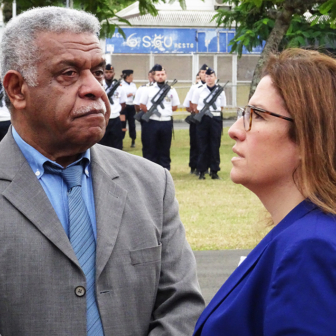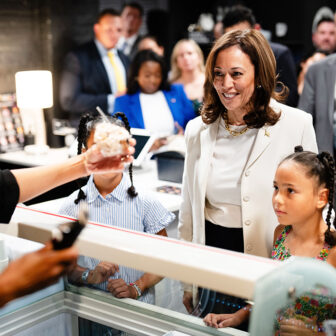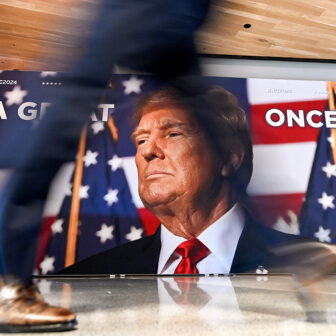Already most media reports of Labor’s plan to hold a republic plebiscite during the next parliamentary term come with a disturbing accessory: the estimated price tag. As in: “Labor’s $160m Plan for Republic Plebiscite.”
When we have this kind of vote, cost is almost always a key part of the No campaign. Why are we wasting money and time on this; wouldn’t it be better spent on schools and hospitals? So this development isn’t a great omen for the republic’s chances.
The “two step” strategy — a non-binding referendum on the general idea followed by a constitutional vote on the model — has long been part of Labor’s republic push. Kim Beazley’s plan before the 2001 election was for a plebiscite concurrent with the subsequent election.
As a rule, holding referendums with general elections is preferable, not only because it costs a lot less and is less disruptive to people’s lives. It’s also likely to be drowned out by the political campaign. People are more likely to tick Yes if they don’t overthink it.
But let’s assume the plebiscite is held and the Yes vote prevails, which is no certainty. What then?
One of the narrative strands that emerged from the unsuccessful 1999 referendum on the republic depicts that diabolical genius, John Howard, rigging the outcome by forcing Australians to decide on a particular model. But that was the Constitution’s doing, not the then prime minister’s. Any move to a republic must eventually clear that hurdle.
The logic behind the plebiscite is that voters will feel they have ownership of the process and would be more likely to approve the final constitutional referendum. That seems to envisage sixteen million electors as one big convention, and is quite a leap of faith. Which is not to say it shouldn’t be attempted.
Most surveys indicate that a majority of Australians want us to have our own head of state. A large majority of that majority would prefer the president to be directly elected. But for a republic referendum to pass it must have the support of more than that portion of the voting population. Basic arithmetic tells us that the 45 per cent who voted for the minimalist model in 1999 included some direct electionists opting for a bird in the hand.
The argument that most republicans want an elected president and therefore that option would be more likely to win a referendum is simplistic. It’s rather like concluding that because voters invariably name health as their number one priority, the political party with the most popular health policy will always win the election. (If this were so, we’d almost always have Labor governments.)
There are problems with any direct-election model. The Constitution gives the governor-general enormous powers, which convention, along with the possibility of prime ministerial and royal intervention, restrains occupants from exercising. The advantage of a minimalist model like 1999’s was that such restraining powers could be left in place; if a president went bonkers and announced we would invade New Zealand (the governor-general is commander of the armed forces) a two-thirds vote of parliament could remove him or her.
But an elected president with those powers, and one who felt he or she enjoyed a special mandate as the only politician elected by all Australians, could be quite another thing.
It is almost impossible to imagine any government or parliament allowing such a dangerous plan to go to a referendum, let alone it passing.
The powers would need to be codified first. That’s hardly insurmountable, but such a vast rewriting would provide plenty of ammunition for republic opponents.
Hybrid models involving parliamentary oversight without changing the current powers, as suggested here and here for example, would still allow a president who suspected he or she was going to be removed to dissolve parliament first. (In theory, this is also possible with the minimalist model, but the incumbent would at least not have “people power” onside.)
And writing into the Constitution parliamentarians’ ability to veto candidates and remove elected presidents? That No campaign writes itself.
In June, academic lawyer Megan Davis argued persuasively in the Monthly that the campaign for an Indigenous Voice to Parliament should be linked with the republic. Others have made similar arguments.
The obvious rejoinder is that lumping them together aggregates the difficulties — that it risks alienating monarchists who are sympathetic to the Voice, and republicans who aren’t. But voting behaviour doesn’t always adhere to these linear formulations.
Under the right political conditions — in 1988, say, with the Hawke government in its third-term doldrums, voters inclined to give it a bloody nose, annoyance at being dragged to the ballot box, and Coalition opposition — you can get a 62.4 per cent No vote on a proposition to “provide for fair and democratic parliamentary elections throughout Australia.” Yet, also under the right conditions — including bipartisan support — large majorities have voted for rather arcane changes.
Davis has a point when she says that the old assumptions about “bipartisanship” don’t necessarily still apply, given the low esteem in which the political class is held (and as measured by the low primary votes of the major parties).
I don’t share Davis’s and others’ optimism about the likelihood of Australians supporting the Voice. Then again, I don’t like the republic’s chances much either, under any model. In fact, given the current condition of our politics, it’s difficult to envisage any constitutional referendum on anything being passed again — ever.
And Australians enjoy saying No to “elites.” It makes them feel good.
But what have we got to lose? Since Federation we’ve had thirty-six defeated referendums, and after none of them has the sky fallen. Governments of the day are left red-faced, but there is no evidence it impedes their longevity.
Why should we be scared to make it thirty-seven, or thirty-eight or forty? There’s an argument that a failed Voice referendum would be a setback for the cause, but why?
Without the Voice, there seems no particular reason for Indigenous Australians to feel excited about the prospect of this final separation from Britain. On the contrary: in the 1800s, London sometimes had a moderating influence on colonial infliction of atrocities on Aboriginal people. From around that time the racist and influential Bulletin magazine — slogan “Australia for the White Man” — was campaigning for a republic. So the two causes of the Voice and the republic might not seem a natural fit. But in the twenty-first century they could prove complementary and compelling.
The Voice could rescue the republic from its current status as dreary 1990s kitsch. The republic could help provide an alluring context for the Voice. It would be a distinctly Australian aspiration.
Perhaps the sum can be greater than the parts. •





